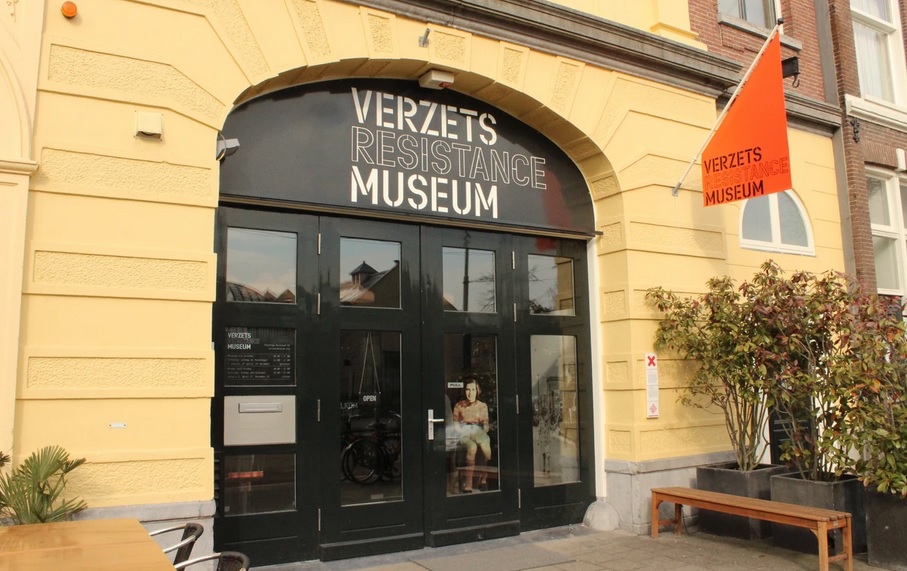
On the occasion of a meeting of Subvertisers International in Amsterdam in early March 2023, we also visited the Resistance Museum there. The Resistance Museum documents the resistance of the Dutch population against the German occupation 1940-1945. We were looking there for old subvertisings and found some! The museum shows examples of adbustings and other subversive protest techniques.
Where to look?
Where to find old subvertisings? In the archives of the law enforcers of the time. Because the henchmen are almost the only ones who document these volatile forms of action for the purpose of subsequent prosecution or sometimes execution of those responsible. Among the very few places where these archives become available to the public are the resistance museums all over Europe. In this constellation, the subversive actions suddenly legitimize the contemporary state and thus, for once, there are financial resources for documentation and research for these topics.
Verzetmuseum
The Dutch Resistance Museum in Amsterdam is a historical museum documenting Dutch resistance to German occupation during World War II. It is located in a former Jewish theater. The museum was founded in 1984, and since December 2022 it has a new exhibition.
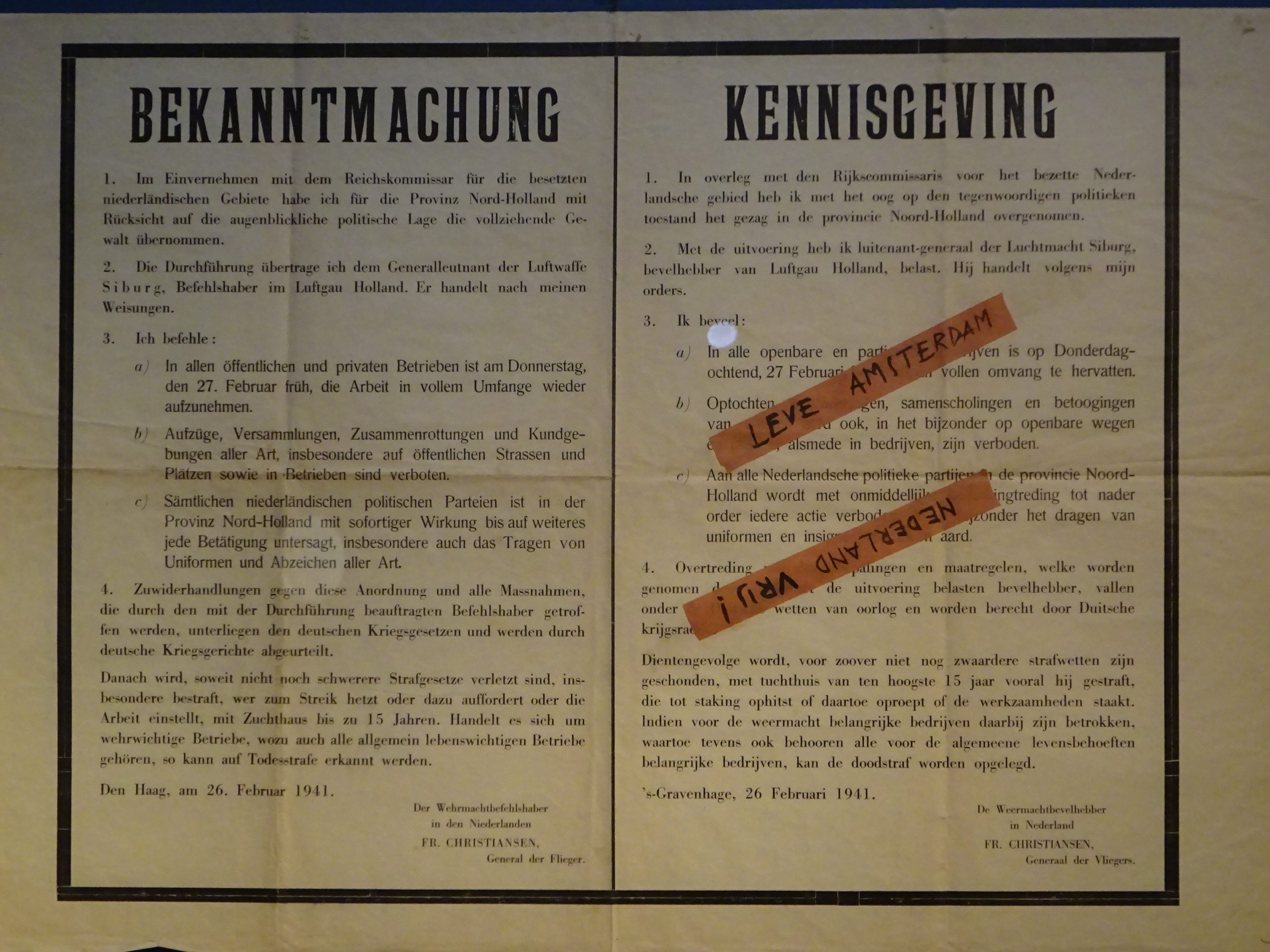
“Leave Amsterdam!”
Right at the entrance, we encounter a reprint of an adbusting from Breda dated Feb. 26, 1941. The reprint shows a proclamation from the occupying forces with two disruptors pasted on it. On the disruptors is translated: “Leave Amsterdam!” and “The Netherlands are free!”
The orange V
For the story about the second adbusting we have to go a bit further. In the Netherlands, too, the “V” spread rapidly as a sign for the Allied resistance. In addition, the Dutch resistance used a “V” in the color orange. Originally the color of the royal family, orange is today as then the national color of the Netherlands.
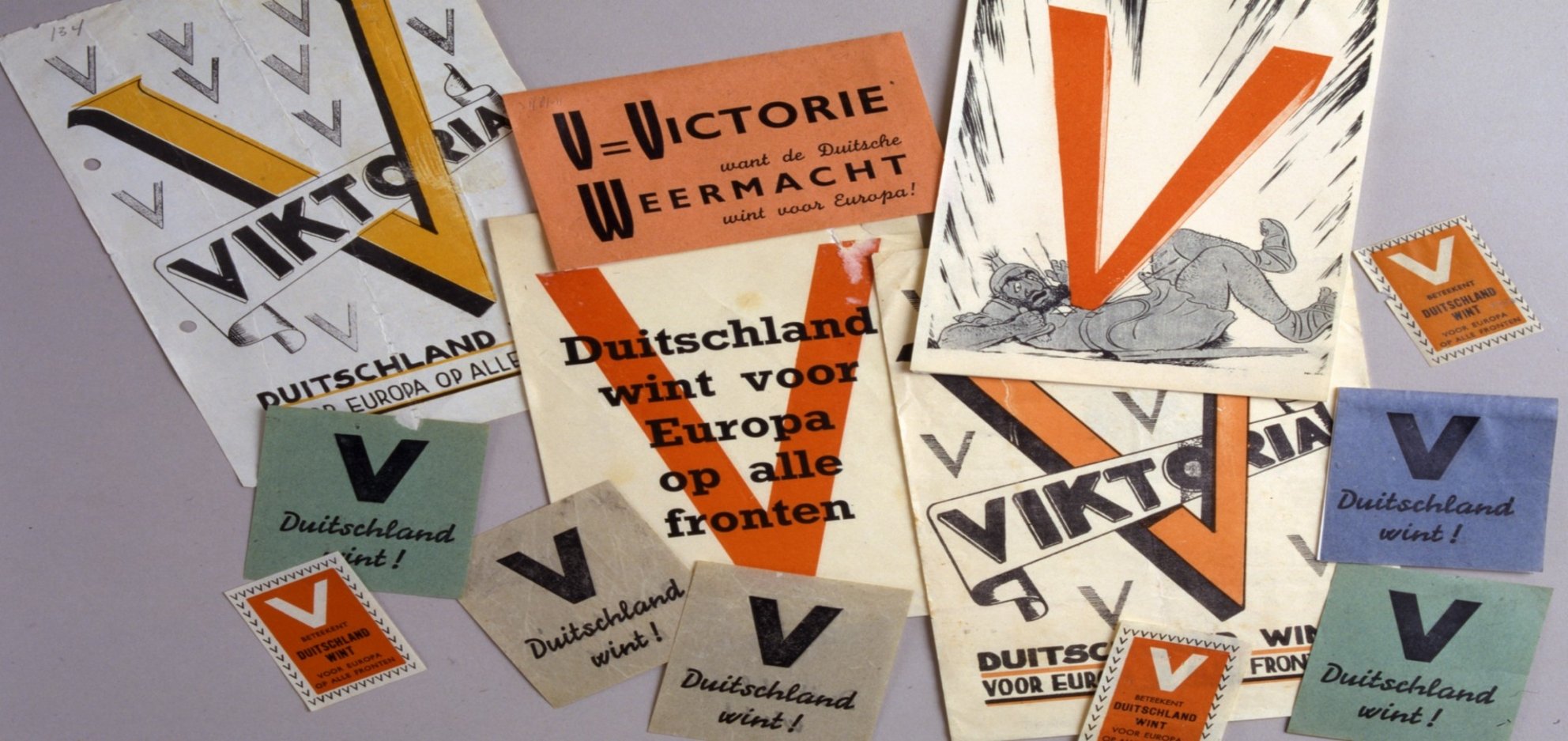
rebranding
The German occupation forces attempted to re-brand the orange “V”. In massive propaganda campaigns, the German authorities tried to give the letter the meaning “Victoria! Germany is victorious on all fronts!” Not necessarily wisely, because the flyers and posters of the occupying forces were now adorned with the color of the royal family. And with a few scissor cuts and some glue, two “V “s could be made into a “W” like in Wilhelmina, the high kingness of the netherlands.
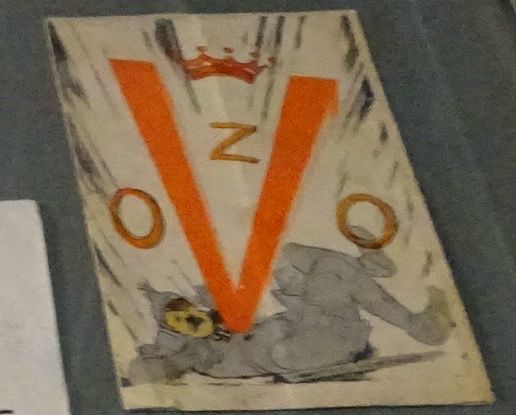
Crayon adbustings
But the Dutch resistance went one better and hijacked the motifs. On these occupy-produced flyers, one originally sees a caricature meant to denigrate a “Bolshevik.” An orange “V” bores into the body of the figure. However, the resistance turned this anti-Russian caricature into an adbusting. With a few pencil strokes, the shock of hair of the “Bolshevik” became a pimple cap and the head of the figure is now adorned with a parted hairdo and a small upper lip beard, looking like the tiny dictator from Germany everybody knows until today.
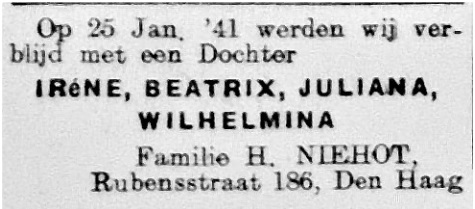
Subversive newspaper ads
More subtle is this way of sneaking dangerous things into daily newspapers. After demonstrations took place on the occasion of the Queen’s birthday, the occupying power forbade any reference to the Orangemen and also the public mention of their names. In 1941, the midwife Nelia Epker (1901-1977) persuaded a couple to name their newborn after the members of the royal family and to place a birth announcement. And so, on January 29, 1941, the newspaper Haagsche Courant carried the tiny news that an Irene Beatrix Juliania Wilhelmina Nihot had been born. Surprisingly, the very small newspaper advertisement caught the attention of thousands of people at that time and they sent patriotic greeting cards, gifts and money. It also caught the eye of the occupying forces: The Germans kidnapped her to the Ravensbrück concentration camp.
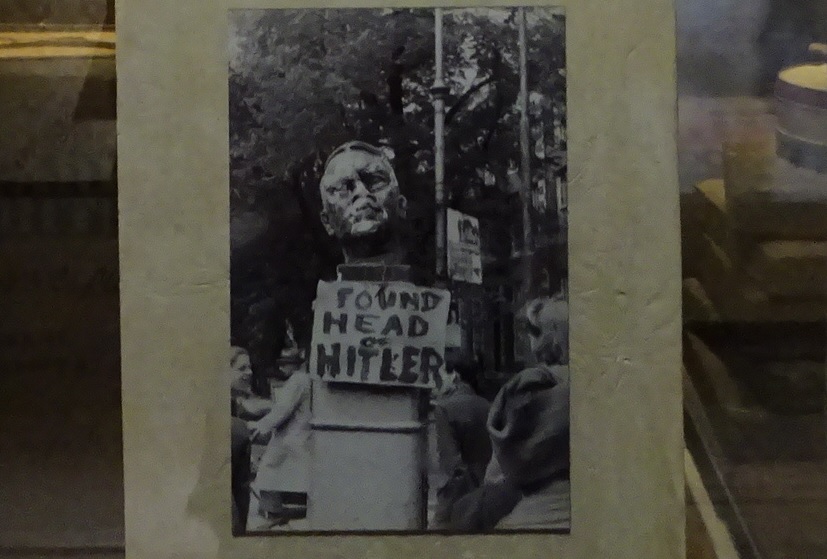
Hitler’s Head
Nonsense with monuments existed of course also at that time. In 1945, after the liberation, someone photographed this larger-than-life bust of Hitler’s head. It is badly damaged and has a sign on it. The sign reads, “Found the Head of Hitler.” Old pictures on the net show that in the old exhibition, in addition to the photograph, the museum also displayed the damaged original bust made in the workshop of Hitler’s favorite sculptor Arno Breker.
Conclusion?
Subvertising was of course not invented by the situationists. Even before that, people were creative and came up with a lot of ideas to express their protest. Especially the social conditions of authoritarian regimes and dictatorships regularly spark this imagination. And the harsh repression shows that it is precisely systems of rule based on violence that react allergically here. The secret knowledge of the lack of legitimacy is probably the reason. Perhaps this also explains why today in democratic states the police and military, of all things, tend to overreact in confrontation with creative protest.
More:
Study on the newspaper ad and Nelia Epker:
https://studenttheses.uu.nl/handle/20.500.12932/16912
The Verzetmuseum has a killer digital catalog. If you get bored a lot, you’re bound to find more there:
https://collectie.verzetsmuseum.org/ais6/results
The Verzetmuseum:
Plantage Kerklaan 61,
1018 AD Amsterdam
The entrance fee is 14 euros.

